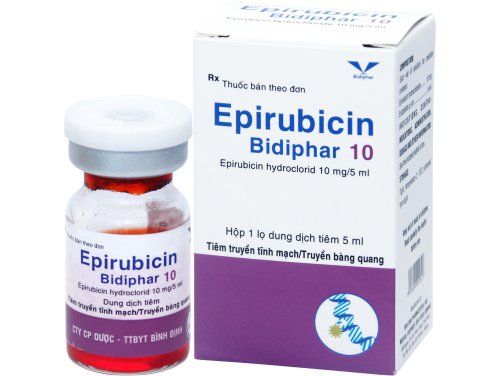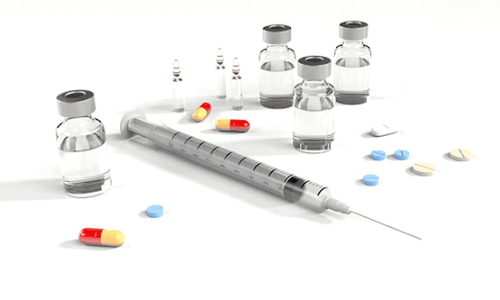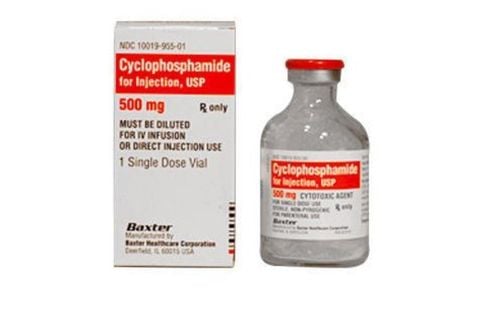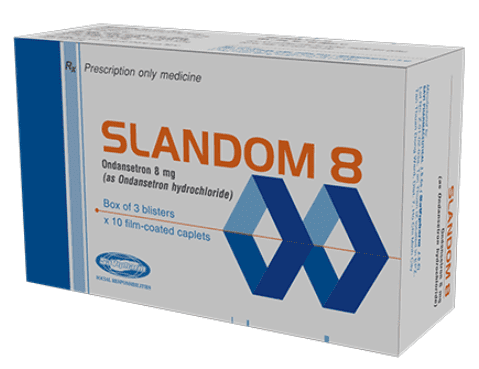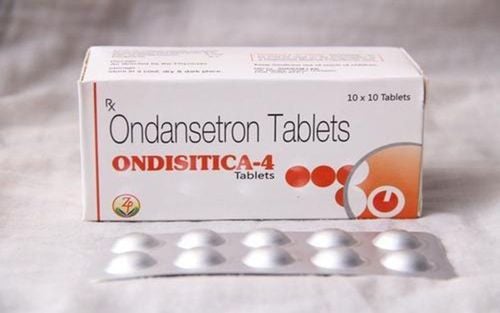This is an automatically translated article.
Breast cancer in men is often staged in the same way as in women, however treatment options may be different. Determining the specific breast cancer stage will help patients have the right treatment regimen and achieve high efficiency.
1. An overview of breast cancer stages in men
Breast cancer stage is usually determined through the results of tests such as biopsy, CT scan or MRI. Through the specific stage of cancer will help doctors plan the most appropriate and effective treatment for the patient.
Breast cancer is generally classified according to the TNM system, which includes:
T - description of the location, extent and size of the main tumor in the breast. N – describes cancer that has spread to lymph nodes. M – describes cancer that has spread to other organs (also called metastases). Male breast cancer will be classified into the same 5 stages as in women, based on the following conditions:
The size of the breast tumor is present on the mammogram and what is diagnosed discovered after surgery to remove the tumor. There are any signs that the breast tumor has spread (metastasized) to other organs. Surgery checks for the presence of cancer in the lymph nodes. Determining the specific stage of breast cancer in men is an extremely necessary step, helping to provide specific guidelines for treatment therapies. Here are 5 specific stages of male breast cancer, including:
Stage 0: Classified into 2 main types as adenocarcinoma in situ (LCIS – abnormal cells in a breast gland) , increases the risk of developing cancer) and ductal carcinoma in situ (DCIS – abnormal cells found in the milk ducts, which increase the risk of invasive breast cancer). Stage I: This is an early stage breast cancer, tests show that there is a tumor in the breast less than 2cm, there is no sign of metastasis to lymph nodes or other locations. Stage II: Still early-stage breast cancer, the test shows that the tumor is less than 2cm and has spread to 1-3 lymph nodes under the armpit, or the breast tumor is 2-5cm in size (never or has been). has spread to axillary lymph nodes), or the tumor is larger than 5cm and has not spread beyond the breast. Stage III: Locally advanced breast cancer, the tumor size is larger than 5cm and has spread to the lymph nodes under the armpit, or cancer cells are found in more than 3 lymph nodes under the armpit. Sometimes, breast cancer also spreads to other tissues near the breast or to lymph nodes near the breastbone. Stage IV: Metastatic breast cancer, the tumor has spread outside the breast and invaded other organs in the body.
2. Measures to treat breast cancer in men
Treatment options for male breast cancer will be based on factors such as the patient's age, cancer stage, test results, and overall health. There are now treatments for male breast cancer, including surgery to remove the tumor, chemotherapy, radiation therapy, targeted therapy, or hormone therapy.
2.1 Surgery to treat breast cancer in men Men with breast cancer can choose from 2 surgical methods, including:
Mastectomy: The entire breast will be removed. Breast-conserving surgery: Part of the breast/tumor will be removed. This is a treatment option for older male patients with other health conditions or who want to preserve nipples. In addition, patients may also need additional radiation therapy after breast-conserving surgery to help prevent cancer recurrence in that breast. Some patients with breast cancer may also need to remove axillary lymph nodes through biopsy or axillary dissection. The removed breast tissue as well as lymph nodes will be evaluated under a microscope to look for the type of cancer cells, the size of the tumor, the number of lymph nodes with cancer, their aggressiveness or the presence of cancer. presence of HER2, estrogen and progesterone receptors. This allows the doctor to help the patient find the best treatment option.
2.2 Chemotherapy for male breast cancer After being removed surgically, there is still a chance of small cancer cells remaining and spreading to other parts of the body. At this time, male patients with breast cancer may need chemotherapy treatment, which removes any remaining cancer cells and prevents the cancer from returning.
Chemotherapy drugs can work throughout the body and are more effective for patients with early or intermediate breast cancer (0, I and II). The decision to have chemotherapy for men with breast cancer will depend on the health of the patient, the biology of the tumor, and the age of the patient.
Chemotherapy drugs for male breast cancer usually include many different types, which can be used alone or in combination in a regimen 3 to 6 months after surgery. Most chemotherapy drugs are given intravenously (IV), such as Cyclophosphamide, Adriamycin (doxorubicin), Methotrexate, 5-FU, and Taxanes (Taxol, Taxotere).
2.3 Radiation therapy for male breast cancer Treatment for male breast cancer may also include radiation therapy. In this therapy, the doctor destroys cancer cells through high-energy X-rays. In general, radiation therapy is recommended for patients with early breast cancer who have undergone breast-conserving surgery.
Radiation therapy can help reduce the risk of local cancer recurrence. Patients will receive radiation therapy within 5 days/week and for no more than 6 weeks. For the treatment of early/medium-stage male breast cancer, radiation therapy can be performed from 4 to 5 weeks, in the last 1-2 weeks of treatment will increase radiation to deliver radiation to the breast. tumor sites. In addition, patients can also choose some other radiation treatment such as Mammosite or Brachytherapy, which reduces the treatment time to 7 days, but is rarely used.
3. Treatments for late-stage breast cancer for men
In fact, the treatment of late-stage male breast cancer is different from that of early and intermediate stages. Treatments for stage III and IV breast cancer may include local or systemic.
3.1 Local treatment of advanced breast cancer in men For this method, a certain part of the body is treated with surgery or radiation. This is considered one of the useful treatments for late stage male breast cancer.
3.2 Surgery for advanced breast cancer in men Stage III (locally advanced) breast cancer is usually treated with a radical mastectomy and axillary lymph node dissection. Patients may receive chemotherapy before surgery to help shrink tumors, making them easier to remove. However, stage IV breast tumors are not usually treated with surgery.
3.3 Radiation therapy for late-stage breast cancer in men In the case of men with advanced breast cancer, radiation therapy to the chest wall or breast after a radical mastectomy may be considered. . Sometimes, patients also need radiation therapy to the supraclavicular or underarm (armpit) area. The main aim of this therapy is to destroy any cancer cells present in the lymph nodes under the armpit.
Radiotherapy for advanced breast cancer in men usually takes place in 5-6 weeks, 5 days/week. Although radiation is painless, patients may experience side effects such as fatigue and skin irritation during treatment, but these only last for a few weeks after treatment ends. .
3.4 Systemic treatment for late-stage breast cancer in men Late-stage breast cancer is when cancer cells have spread throughout the lymph nodes, nearby tissues, and other organs in the body. For the treatment of advanced breast cancer, male patients may receive systemic therapy, including hormone therapy, chemotherapy, and targeted therapy.
Treatment options for advanced breast cancer will be different for each patient. Therefore, you should talk to your doctor about issues such as HER2 status, hormone receptors, previous treatments, treatment goals, health status, and life balance with side effects.
3.5 Chemotherapy for terminal cancer in men Chemotherapy regimens may include one or several sessions. The doctor will stop the patient from chemotherapy when serious side effects occur. Most chemotherapy is given through a vein, but some are given orally. The following chemotherapy drugs are used in the treatment of terminal breast cancer in men:
Adriamycin (Doxorubicin). Methotrexate. Ixabepilone . Epirubicin. Capecitabine. Taxanes. Vinorelbine. Fluorouracil. Eribulin. Epirubicin. Ixabepilone. If breast cancer has metastasized to the bone, the patient may need medication to help prevent bone damage and reduce pain. These typically include Pamidronate (Aredia), Denosumab (Xgeva®), and zoledronic acid (Zometa).
3.6 Hormonal therapy for terminal breast cancer in men Hormone therapy is typically used for terminal breast cancer that has progesterone or estrogen receptors. The drugs used include Aromatase inhibitors or Tamoxifen.
If the patient cannot take Tamoxifen, the doctor may recommend Aromatase and a GnRH agonist. These drugs are given 5 to 10 years after the patient has had surgery for breast cancer. However, men using Aromatase inhibitors may experience joint/bone pain, increasing the risk of osteoporosis. Therefore, patients taking this drug need to have their bone density checked before starting treatment.
3.7 Targeted therapy for late-stage breast cancer in men HER2 receptor-positive breast cancer in men typically grows faster and spreads more aggressively. Targeted drugs for this type of cancer are Trastuzumab (Herceptin®), Pertuzumab (Perjeta®), Lapatinib (Tykerb®), Fam-trastuzumab deruxtecan-nxki, Neratinib (Nerlynx), or Ado-trastuzumab emtansine (Kadcyla). . In addition, male breast cancer is more likely to be hormone receptor positive (HR+). Measures used to treat HR+ include Palbociclib (Ibrance®), Abemaciclib (Verzenio ®) and Ribociclib (Kisqali®).
Olaparib (Lynparza®) is another targeted therapy, also known as a PARP inhibitor, used for men with BRCA-mutant breast cancer. Sometimes, patients can also take a PI3K inhibitor (Alpelisib (Piqray®)) to treat breast cancer with a PIK3CA gene mutation.
Breast cancer in men is often staged in the same way as in women. Determining the specific breast cancer stage will help patients have the right treatment regimen and achieve high efficiency.
Department of Oncology - Radiation Therapy of Vinmec system is focused on carefully investing in expertise and equipment, bringing satisfaction to patients.
The leading team of domestic and international doctors: the doctors are all highly qualified, experienced, conscientious and knowledgeable, having worked in major hospitals of Vietnam, Korea, Russia, are trained specialized training in the country and abroad to bring the most effective and new treatment regimens to patients. Intensive technique, effective treatment of difficult cases: is the first and only hospital in Vietnam to successfully deploy robotic surgery. CT scan accurately detects cancer even when there are no symptoms. Applying advanced gene technologies to early detect the risk of 16 most common cancers. Deploying autologous immunotherapy and thermotherapy in combination with cancer treatment to effectively prevent recurrence. Continuously working for the community: always accompanies the community in free screening programs for common cancers: Breast, cervical, colorectal, etc. Thousands of patients cannot be screened for cancer, join hands with the community to fight back the dreaded cancer.
Please dial HOTLINE for more information or register for an appointment HERE. Download MyVinmec app to make appointments faster and to manage your bookings easily.
Reference source: oncolink.org




